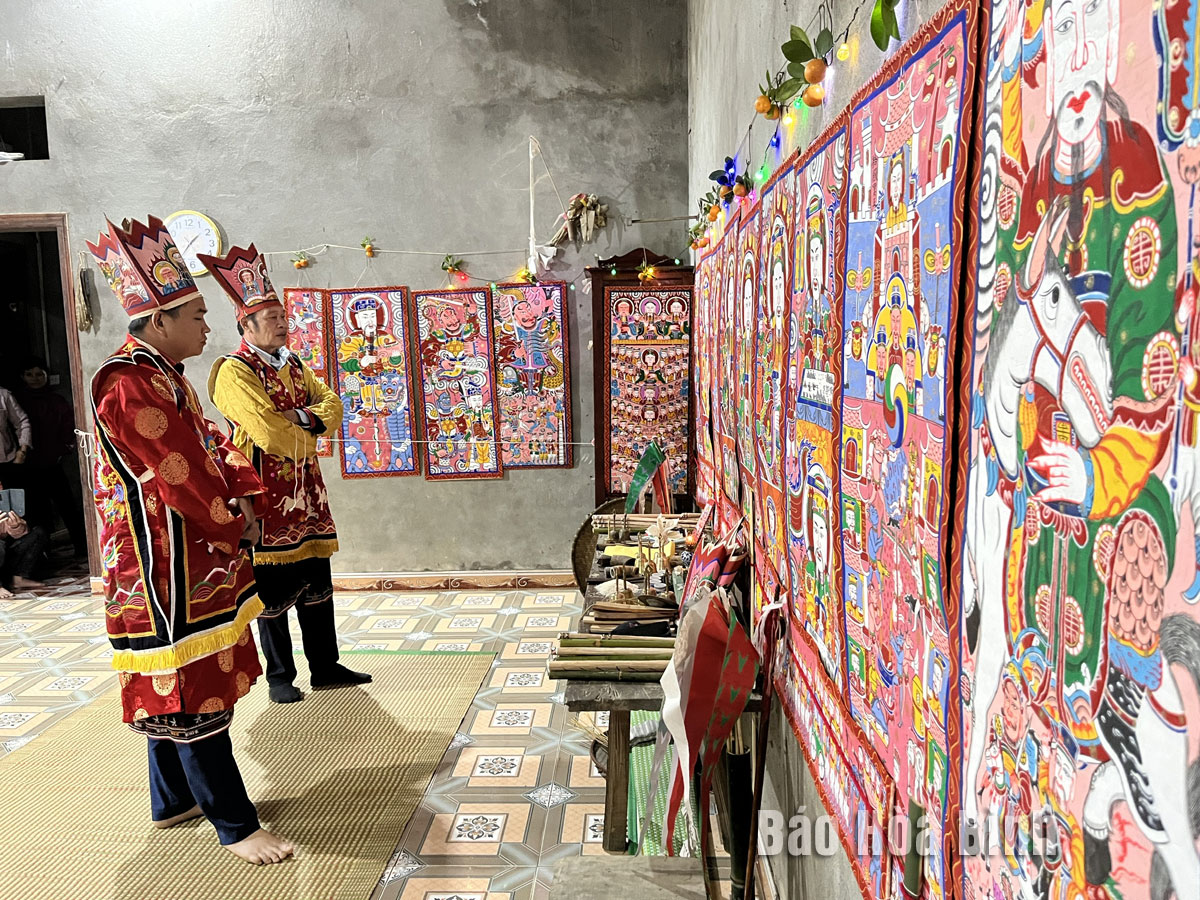



During the festival, the worship area is carefully arranged by the homeowner, in which traditional worship paintings are indispensable. For the Dao ethnic people, worship paintings play an important role in religious activities. These are precious paintings that each family must have, considered as treasures and used only on important occasions. In the evening of the first day, when all procedures of the Lunar New Year are completed, the sound of trumpets, drums, and brass bells sound in the living room hung with altar paintings, mixed with the sound of chants and howls, creating a very impressive and mysterious scene.
The main ritual of the festival takes place from the first night. During the night, several traditional dances will be performed to welcome gods and ancestors. The most special performance is the turtle dance. The turtle is one of the two animals worshipped by the Dao ethnic people, so this dance holds a special meaning.
In front of the altar, a dancer walks first, followed by men and young men dressed in national costumes, following each other around the ceremony area, describing the movements of worshipping Ban Vuong, the ancestors of the Dao people. Each person will hold an object which can make sound with each dance.
As a long-standing ritual, handed down and inherited by many generations of the Dao people, over the years, the Dao ethnic people in Thung Dao Bac village have always attached importance to preserving and promoting the unique cultural values of their group.
With the meaning of thanking heaven, earth, gods, ancestors, offering ancestors, rain gods, wind gods to pray for favourable rain, harmonious wind, good harvests, good things to people, the festival is a spiritual bond connecting generations of the Dao people, an opportunity for descendants to unite, sending the desire for a warm and happy life while educating descendants to remember the merits of their ancestors, to unite, work enthusiastically and build a rich, strong village, a prosperous and happy life.